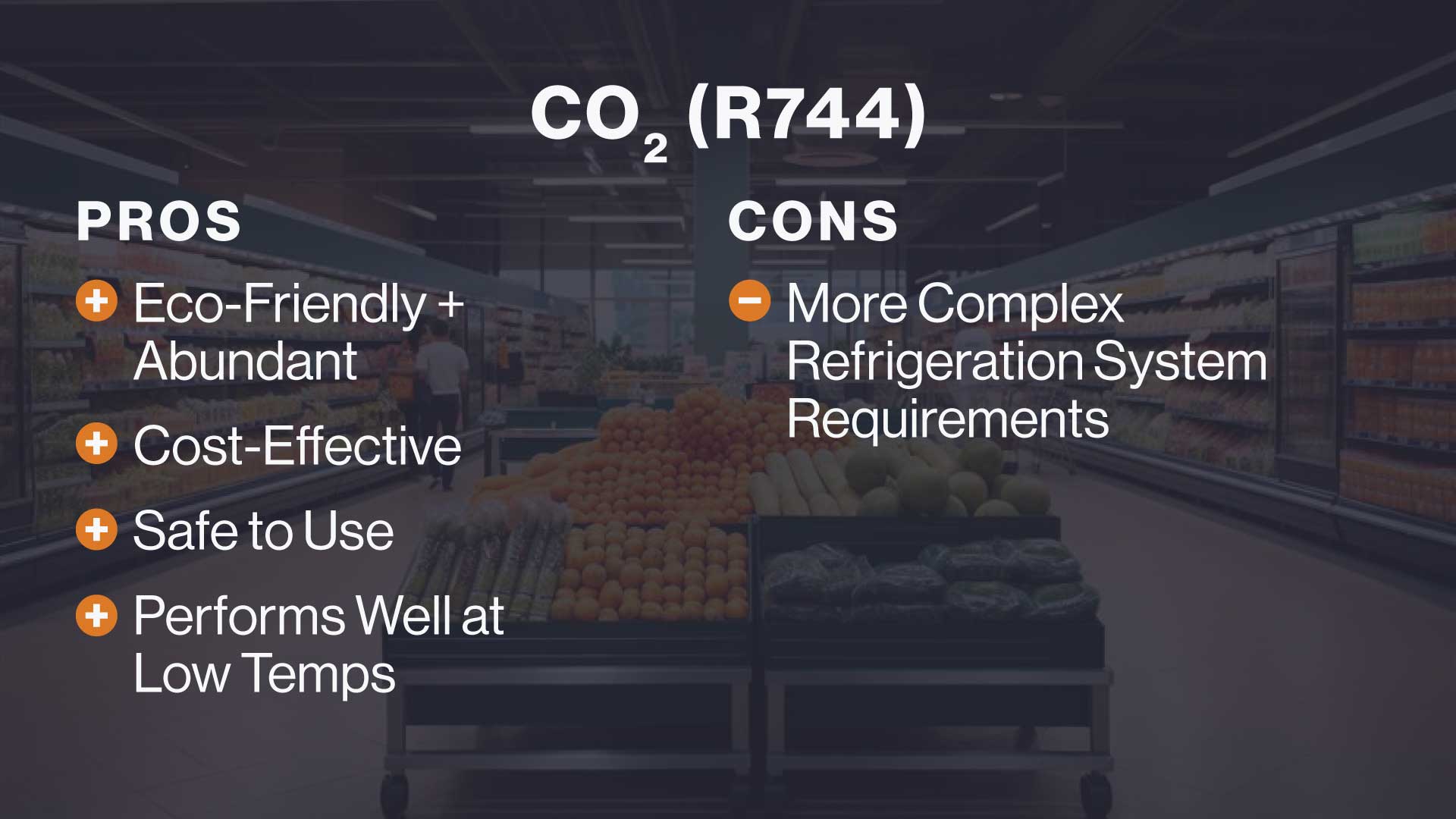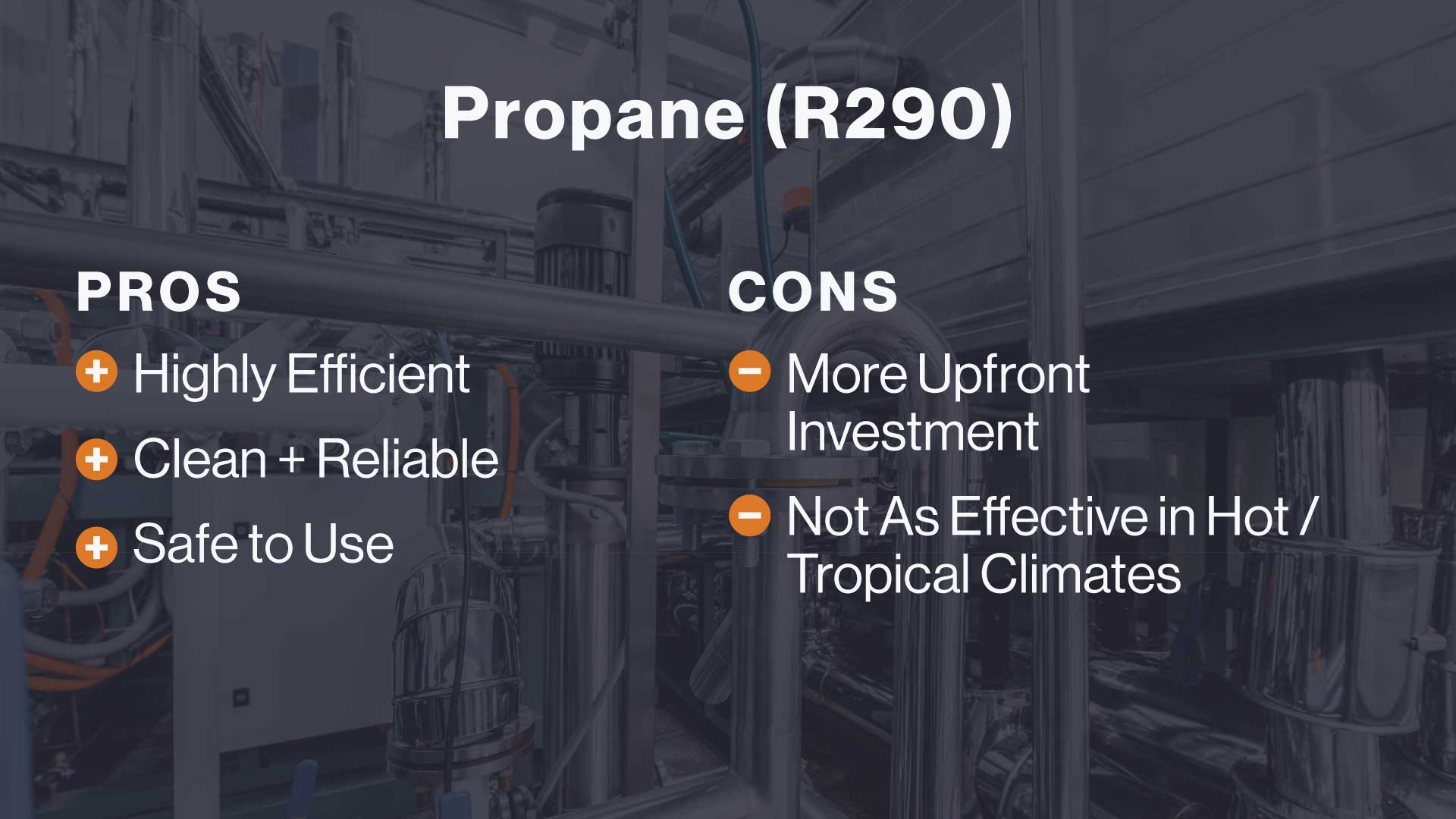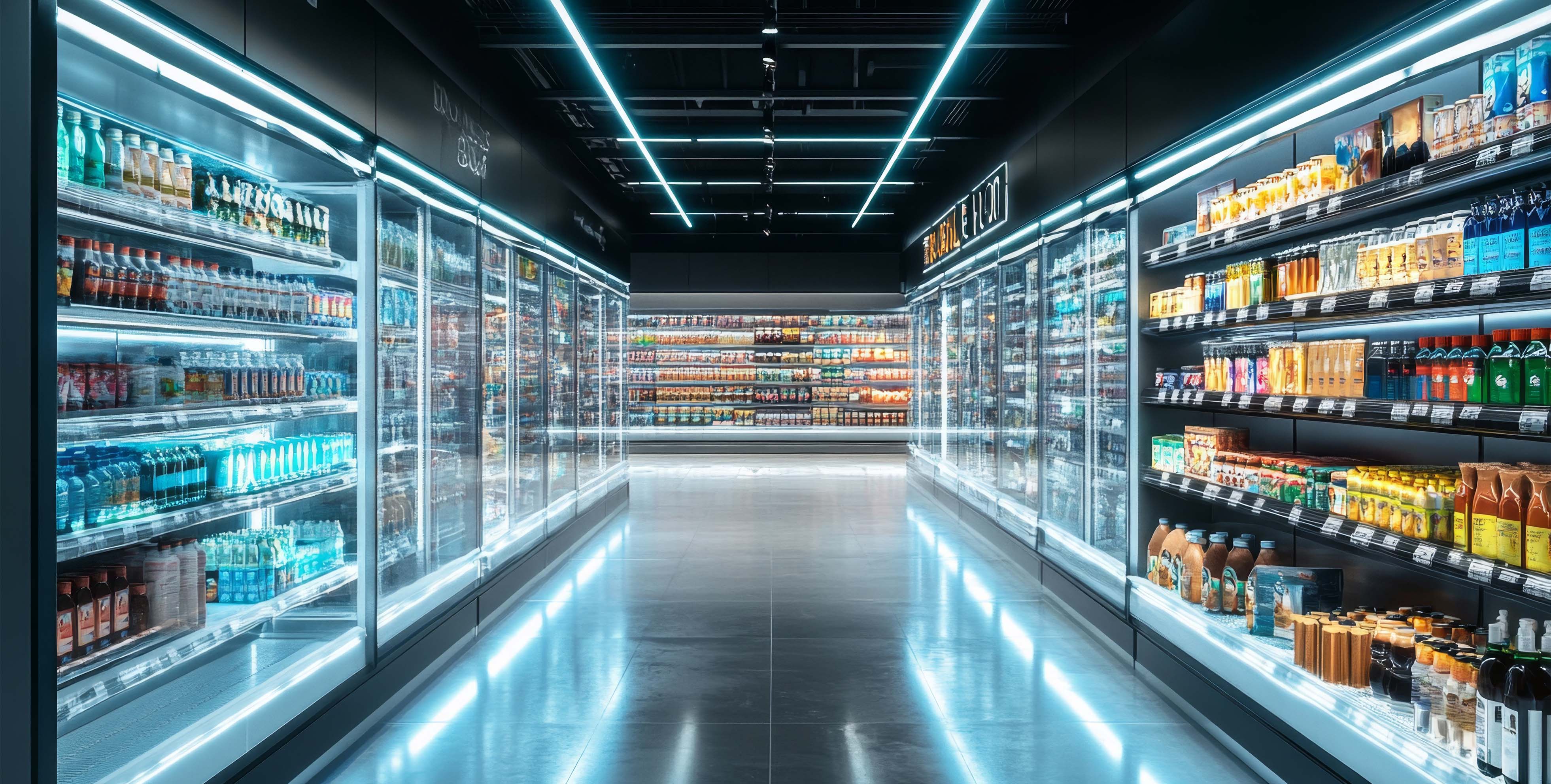In recent years, increased pressure has been placed on industry leaders to continue to look at how they can lower emissions and comply with new and evolving regulations sent down by the EPA and other agencies. The year 2020 brought forward the American Innovation and Manufacturing Act (AIM), which mandated a phased down approach to the use of hydrofluorocarbons (HFCs) that have high global warming potential (GWP) in manufacturing and retail sectors like grocery stores and others. By 2036, the AIM Act mandates an 85% drop in high GWP HFCs. To do so, many national grocery chains have begun shifting to less harmful refrigerants, that are slowly getting closer to that elusive Net Zero.
However, not all refrigerants are made equal, and the changing regulations can make it confusing to know which refrigerants are the right mix for each retailer. What is right for each retailer isn’t always the same, especially when looking at the upfront and maintenance costs that come with some of these systems. One size does not fit all, and we think it’s important to look back at the impetus for these changes to help you determine what’s the right move for you and your refrigeration systems.
Thinking about Making the Switch? Understanding Natural Refrigerants
Grocery retailers are typically willing and able to make the switch to more sustainable gases for their refrigerated cases. However, knowing which is the “right” choice can be a puzzle. All refrigerants operate differently, and those differentiations in operation also necessitate where these refrigerants work the best. As you begin to explore a change from one to another, it’s important to look at the whole picture to make sure you are making the right choice for your site, your employees, your customers, and of course, your end goal. Let’s take a look at the more common natural refrigerants and how they can help you stay cool under pressure.

CO₂ (R744)
Pros of CO₂:
CO₂ has largely been recognized as the next right choice because of its very low GWP (a rating of 1), and its cost-effectiveness for owners and operators. CO₂ is also non-flammable and non-toxic, making it safe for operators and customers. It can also function efficiently at lower temperatures, which is conducive to powering refrigerated systems. CO₂ is also an abundant resource and can be accessed relatively easily, making it the natural choice for many grocers.
Cons of CO₂:
CO₂ requires higher operating pressures to function properly, which translates into more complex refrigeration systems needing to be created in order to contain it. Because of these high pressures, there is greater demand put on refrigeration equipment and there is a need for safety precautions in case of valve or pipe failures. When choosing piping systems, special care must be taken when choosing valves, pipes, and seals, ensuring they are able to withstand high pressures without strain.
Bottom Line: What to Know About CO₂ Refrigerants (R744)
- Eco-Friendly + Abundant: With an ultra-low GWP of just 1 and wide availability, CO₂ is a smart, sustainable choice that aligns with environmental goals.
- Safe to Use: It's non-flammable and non-toxic, making it a safer option for both workers and customers.
- Performs Well at Low Temps: CO₂ thrives in cold environments, making it ideal for grocery and food retail refrigeration.
- System Complexity Matters: CO₂ systems operate at much higher pressures, so they require specialized equipment, components, and trained technicians — which can increase setup costs and maintenance complexity.

Propane (R290)
Pros of Propane:
Propane was discovered in the late 1860s, but it wasn’t until the 1900s that it was recognized for its potential as a fuel source. Since then, propane has been used to heat homes, power cooking equipment and water heaters, and more. With propane’s versatility and accessibility, it’s often looked to as a convenient choice. Propane is also a very efficient refrigerant. A much smaller quantity of R290 is required for refrigeration than that of other refrigerants. This becomes another positive attribute for propane. Because you need less of it in your refrigeration systems, should a leak occur, any potentially harmful effects are minimized because of the lack of flammable matter leaking into the surrounding environment.
Cons of Propane:
As noted above, propane is flammable, so it does require both proper storage and handling to ensure the safety of those in its vicinity. This also means that proper ventilation and safety precautions are taken in enclosed spaces where propane tanks may be stored. Because the use of propane in refrigeration systems is still a relatively new alternative in the refrigeration rack area, the initial startup costs that include specialized safety features and the specialized components needed might be cost-prohibitive for some retailers.
Bottom Line: What to Know About Propane Refrigerants
- Highly Efficient: Propane packs a punch — it delivers more heat transfer with less refrigerant, making refrigeration systems run efficiently while using smaller quantities of refrigerant.
- Clean + Reliable: It has a global warming potential (GWP) of approximately three, and it doesn’t expire, making it a dependable long-term choice.
- Safer Than You Think: Because so little propane is needed to operate systems, even in the event of a leak, the risks are reduced — but safety protocols are still essential.
- Upfront Investment: Propane systems may require higher initial costs due to necessary safety features and equipment — but many see that investment pays off in efficiency and sustainability.
- Climate Matters: Propane systems are most efficient in mild to moderately warm regions. In hot or tropical climates, they can still work well but may need additional engineering (like better ventilation or capacity planning) to avoid performance loss. Consider your location’s seasonal temperature highs and indoor heat load when evaluating the use of propane systems.

Are Alternate Sources Right for Your Refrigeration Needs?
There’s no one-size-fits-all answer and that’s exactly why this decision deserves thoughtful consideration. While CO₂ and propane both offer compelling benefits in the shift toward lower-emission refrigeration, they also come with unique system requirements, safety protocols, and cost considerations. Choosing the right solution isn’t just about checking a sustainability box — it’s about aligning your refrigerant strategy with your operational needs, infrastructure, and long-term goals.
The next step? Engage early with your refrigeration engineers and system design partners. Their insights are critical to evaluating site-specific factors, understanding the trade-offs, and ensuring your investment is optimized for performance, safety, and compliance. The future of refrigeration is evolving fast and having the right team at the table now will position you to make confident, forward-thinking choices that keep your systems running cool and clean for years to come.
###



.jpg)
.png)


.jpg)



